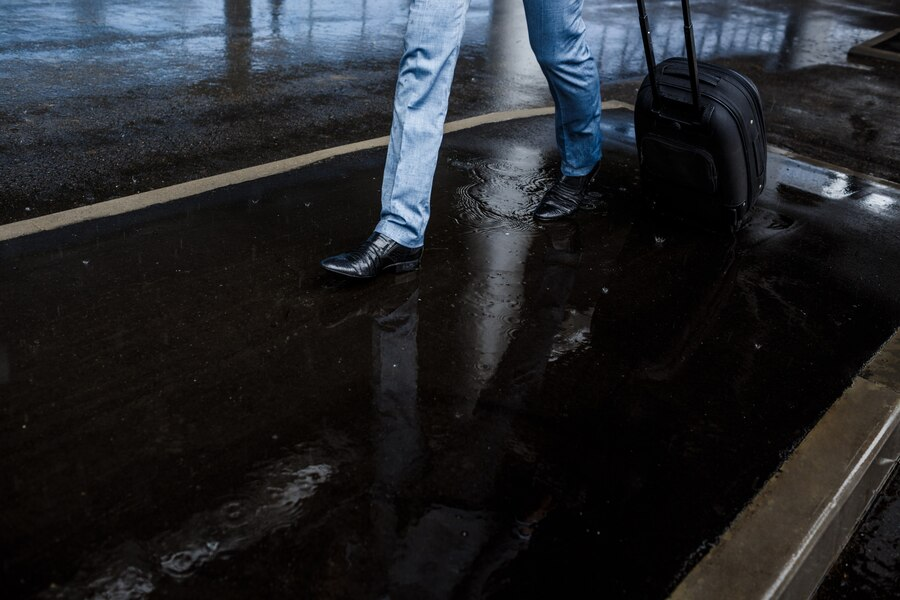Essential Waterproofing Techniques for Outdoor Enthusiasts

In outdoor adventures, mastering the art of waterproofing is not just a skill—it’s a necessity. Whether you’re hiking through misty forests, camping under unpredictable skies, or kayaking down roaring rivers, keeping your gear and yourself dry can mean the difference between an enjoyable outing and a miserable experience. Here, we explore essential waterproofing techniques that every outdoor enthusiast should know.
Understanding Waterproofing Basics
Waterproofing goes beyond just repelling water; it involves creating barriers that prevent moisture from penetrating fabrics or materials. This is crucial for protecting sensitive equipment like electronics, ensuring comfort, and maintaining safety in adverse weather conditions.
Choosing the Right Gear
Investing in quality waterproof gear is the first step towards a dry and comfortable outdoor experience. From jackets and pants to backpacks and tents, opt for items specifically designed with waterproof materials such as Gore-Tex, eVent, or similar breathable membranes. These fabrics not only keep water out but also allow moisture from sweat to escape, preventing the build-up of condensation inside your gear.
Seam Sealing
Even the best waterproof fabrics can fail at their seams. Seam sealing involves applying a waterproof sealant along the stitched seams of your gear to prevent water from seeping through the needle holes. Most modern outdoor gear comes with factory-sealed seams, but periodic maintenance with seam tape or liquid seam sealant can reinforce this barrier against moisture.
DWR (Durable Water Repellent) Treatment
DWR is a chemical treatment applied to fabrics to enhance their water repellency. Over time, DWR coatings wear off due to abrasion, dirt, and frequent use. To maintain optimal waterproofing performance, periodically reapply DWR treatments to your outdoor clothing and gear. This can be done through wash-in or spray-on treatments that restore the fabric’s ability to shed water effectively.
Waterproofing Footwear
Keeping your feet dry is paramount during outdoor activities. Waterproof hiking boots or shoes with Gore-Tex or similar membranes provide excellent protection against water while maintaining breathability. Regularly treat leather boots with waterproofing wax or silicone-based sprays to enhance their water resistance and prolong their lifespan in wet conditions.
Pack Cover and Dry Bags
Protecting your gear inside your backpack is as important as keeping yourself dry. A waterproof pack cover provides an additional layer of defense against rain and moisture. For added security, use dry bags or waterproof stuff sacks to compartmentalize and protect essential items such as electronics, clothing, and food supplies. These bags are invaluable for activities like kayaking, canoeing, or any adventure where gear may be exposed to water.
Tent Waterproofing
Your shelter is your sanctuary in the outdoors, and ensuring your tent remains dry is crucial for a comfortable night’s sleep. Begin by selecting a tent with a durable waterproof floor and rainfly made from waterproof materials. Seam seal your tent before its first use and periodically thereafter. Consider using a footprint or groundsheet under your tent to provide an additional layer of protection against ground moisture.
Clothing Layering Techniques
Layering your clothing not only keeps you warm but also helps manage moisture effectively. Start with a moisture-wicking base layer that draws sweat away from your skin. Add insulating layers for warmth, and top it off with a waterproof and breathable outer layer (shell) to repel wind and rain. This versatile system allows you to adjust your clothing to changing weather conditions without sacrificing comfort or protection.
Regular Maintenance and Inspection
Like any equipment, outdoor gear requires regular maintenance to perform at its best. After each outdoor adventure, inspect your gear for signs of wear, damage, or loss of waterproofing effectiveness. Clean your gear according to manufacturer guidelines to remove dirt, oils, and contaminants that can compromise waterproof treatments. Replace worn-out waterproofing treatments, zippers, or damaged seams promptly to maintain gear reliability.







